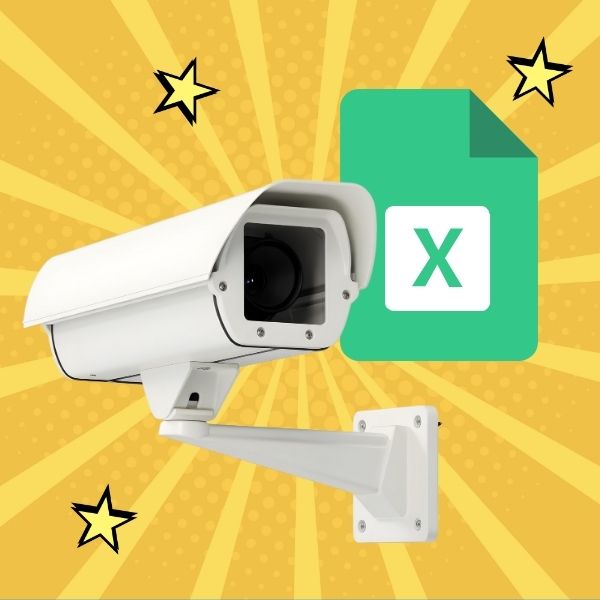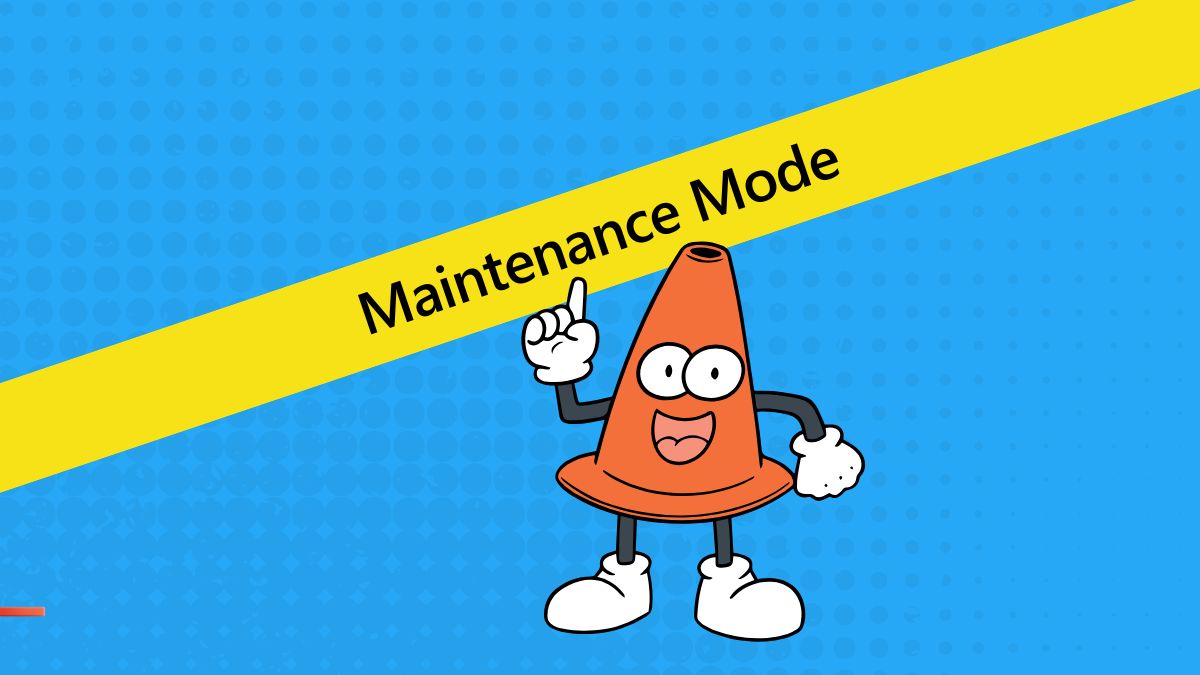
We break down the essential fields every CCTV excel report needs for inventory and storage management and how to automate...
You’ve heard about ChatGPT and are intrigued but just haven’t found the time to sit down and play with it yet. You’re too busy managing servers, updating hardware, changing passwords, and ensuring everyone’s safe. We get it!
Luckily, we’ve been on the GPT-train for months now and going to share our wisdom with you.
In this blog, we looked at four key areas that the Director of Security is responsible for: policy development, team management, stakeholder communication, and system oversight, and found 28 ways that ChatGPT could do some of the thinking for you.
From generating detailed incident reports to automating team updates, we’ll show you exactly how ChatGPT can streamline your workflow and free up your time for what really matters—keeping everyone safe and secure.
Hey there little buddy–crawl out from beneath that rock and join us in 2023, where large language models (LLM) are making our lives and jobs infinitely easier.

We’ll spare you the generic definition of AI and instead tell you that the day of googling half phrases is over.
Ask ChatGPT a question and get a comprehensive answer back. That’s it.
No need to scroll past 10 ads or CTLR+F’ing your keyword.
Follow up the answer with another question, challenge it, or instruct the AI to approach it from a new perspective.
The results will blow you away, and the process will change the way you think about accessing information and completing tasks throughout your day.
We are going to focus on prompts you can use in your job as a security professional, but you can use ChatGPT to cut out the busy work from the rest of your life too.
For example:
“Write me a week-long meal plan for a family of 4. Breakfast and lunch cannot take more than 10 minutes to prepare. Do not include dairy or broccoli.”
“What are 5 exercises I can do so my back doesn’t hurt after sitting in front of a computer all day?”
You get the point. It’s a game-changer.
Create an account at https://chat.openai.com/
Click, click, boom! You’re in.
If you’re wondering if you should upgrade to the paid version—yes.
The free version is fine but the paid version is totally worth the $20/mo.
Why? GPT-4. It’s like upgrading from a go-kart to a Ferrari.
Before you start firing off prompts, you need to set the scene for ChatGPT.
Adding context about your business, use case, goals, etc. will give you more accurate and relevant results.
👉 The more context you can give ChatGPT, the better.
For example:
The template: “I am [your role] at a [setting]. I want you to act as [AI role] and help me [goal] for [audience].”
In practice: “I am the Director of Security at a large university. I want you to act as an expert on cybersecurity and help me create training materials for new students.”
Open a new chat window and try again.
Here are some tips for getting different results:
It’s the newsletter security professionals use to work smarter. We promise you’ll learn stuff and enjoy a few blissful moments of productive procrastination.
Before we began, we looked at the primary responsibilities of the Director of Security and identified four main areas where ChatGPT could help to create efficiencies and created prompts for those.
The four categories we focused on are:
Many of the prompts have a video security focus but can be easily modified for other systems or to be made more broad.
For a select few, we’ve also included the generated response so you can get an idea of what the results look like.
“Outline a phased implementation strategy for new security policies focused on video surveillance systems.”
Duration: 2 Weeks
1. Initial Assessment
Evaluate the current security state of the existing video surveillance system.
Identify weaknesses, vulnerabilities, and opportunities for improvements.
2. Policy Drafting
Collaborate with stakeholders to draft new security policies focusing on surveillance system health, access control, data encryption, and more.
3. Resource Allocation
Assign personnel and allocate resources for the subsequent phases.
4. Technical Training
Conduct initial training sessions for IT staff and security administrators to familiarize them with upcoming changes.
Duration: 1 Month
1. Control Group Selection
Select a small group of surveillance systems and cameras as a testing ground for new policies.
2. Policy Deployment
Apply drafted policies to the control group and rigorously monitor results.
3. Feedback Loop
Collect feedback from the security administrators managing the pilot systems.
4. Data Collection
Gather data on system health, user access levels, and other relevant metrics.
Duration: 2 Weeks
1. Data Analysis
Evaluate the data and feedback collected during the pilot phase.
2. Policy Refinement
Make necessary modifications to the drafted policies based on real-world observations and feedback.
3. Updated Training
Train staff on the refined policies, emphasizing changes and reasons behind them.
Duration: 1 Month
1. Deployment
Roll out the refined policies to all video surveillance systems, cameras, and associated servers.
2. Monitoring
Continuous monitoring of the system to ensure policy compliance and system health.
3. Documentation
– Update all related documentation, including guidelines for ongoing and new challenges specific to video surveillance systems.
4. Post-Implementation Review
Conduct a post-implementation review meeting with all stakeholders to evaluate the effectiveness of the new policies.
Duration: Ongoing
1. Quarterly Reviews
Periodic assessment of policy effectiveness, with adjustments made as needed.
2. Continuous Training
Offer refresher training sessions and updates for new staff or whenever there are significant policy changes.
3. Yearly Audits
Conduct full security audits at least annually to ensure compliance and identify areas for improvement.
“As we’re using Milestone XProtect for video surveillance, GDPR and other privacy regulations compliance is crucial. Create a comprehensive compliance checklist that security administrators can follow. Include specific settings, processes, and documentation requirements that need to be met to ensure full compliance.”
“I need to educate our IT staff about our new video surveillance policies. Provide an outline for a robust training module that includes both theoretical and practical lessons, covering topics such as user roles, data retention, and incident reporting.”
“What penalties should be in place for staff who violate new security policies related to video surveillance systems? Explain the reasoning behind each.”
“How can we ensure that third-party vendors are compliant with our security policies?”
“Describe a detailed process and set of criteria to ensure that all third-party vendors are fully compliant with our security policies.”
“Describe the steps and documentation needed when handling exceptions to security policies, particularly for video surveillance.”
“Draft an incident response plan specific to vulnerabilities or breaches in video management systems.”
“Create guidelines on user roles and access control for Milestone XProtect, ensuring that only authorized personnel can access sensitive video data.”
“We need a policy that outlines how long video footage should be retained and when it should be deleted, especially considering [INSERT SPECIFIC] legal requirements. Draft a detailed document that covers these aspects, along with guidelines for exceptional circumstances like ongoing investigations.”
Join our [NOT] Boring newsletter! It’s the least boring and most helpful security newsletter out there!
“What mechanisms can be set up for auditing compliance with new security policies, particularly for video management systems?”
“In addition to our monthly all-hands meetings, our organization currently uses, email and Slack as our primary communication channels. Outline a communication strategy for informing staff and stakeholders about changes to security policies.”
“I’m trying to prove the value of our security department to stakeholders. What type of metrics should I be looking and and how should I format this type of comprehensive report to be most effective?”
Demonstrating the value of a security department to stakeholders requires a combination of qualitative and quantitative metrics. Your report should ideally tell a compelling story about how the security team contributes to the overall business objectives, protects assets, and mitigates risks. Here’s a guide to help you craft an effective report:
Briefly describe the purpose of the report and the high-level findings.
Highlight any significant changes or trends in security metrics compared to previous periods.
Background:
Explain the role of the security department in the context of the business.
Describe the current threat landscape relevant to your industry.
Highlight a few specific incidents or challenges and describe how the security department handled them. This can give stakeholders a tangible sense of the department’s effectiveness.
Show trends over time (e.g., decreasing number of incidents, faster response times).
Compare your metrics with industry benchmarks if available.
Discuss how security initiatives support business objectives. For example, maintaining trust with customers, enabling safe digital transformations, or avoiding regulatory fines.
Highlight any situations where the security department facilitated business opportunities (e.g., winning a contract due to strong security practices).
Describe any planned security initiatives, their expected benefits, and required investments.
Discuss evolving threats and how the department plans to address them.
Offer actionable recommendations for further improving security posture and practices.
Provide cost-benefit analyses where applicable.
Include detailed data, methodologies, and any other supplementary information.
Lastly, it might be helpful to schedule a presentation to discuss the report with stakeholders, allowing for questions and further discussions.
I’m tasked with producing a monthly security newsletter for my organization. I’d like to include various sections such as “Security Tips,” “Updates,” and “Incident Summary.” Could you help me create a template outline and draft content for these sections?
“I’m working on creating an FAQ section to help stakeholders and employees better understand our security protocols. The common topics they usually have questions about include password policies, access control, and incident reporting. Could you help me generate a list of FAQs and their respective answers covering these topics?”
“Create a text-based simulation of a disaster scenario, like a data breach or physical intrusion, and outline the emergency response steps.”
“I am a part of a team of first responders and I would like to develop better plans for various disaster scenarios. Would you help me think up a disaster scenario involving a massive earthquake and then outline a detailed response plan?”
“I need to create an interactive training scenario about phishing attacks. The format should be a dialogue-based scenario between an employee and a potential scammer. The objective is for the employees to recognize red flags in email communication. Please write a dialogue-based training scenario that highlights these red flags and provides instructional commentary in between the dialogue lines.”
I have a security team of [5] people that I need to schedule for the upcoming week. The team consists of:
We require one cyber forensics expert on every night shift and one physical security expert on weekends. Can you help me generate a shift schedule that meets these requirements?
“Given the critical nature of timely and accurate incident reporting, I’m interested in simulating a text-based walkthrough for filing an incident report. The walkthrough should include various types of incidents such as unauthorized access and camera malfunction. Provide step-by-step questions and options for actions to take, complete with conditional scenarios based on the choices made.”
“I want to better assess the skill levels of potential team members through mock interviews. Could you generate a simulated job interview focusing on both technical skills, like incident response or system configuration, and soft skills like communication or critical thinking? Include a set of questions along with ideal answers for evaluative purposes.”
“I’m interested in assessing my team’s understanding of our security protocols and procedures. Generate a set of multiple-choice questions covering critical areas such as password policies, access control, and incident reporting. Include not just the questions but also the correct answers and explanations for each.”
Tip: If you have a handbook or other resource, consider uploading it as a PDF using your Pro Plan’s code interpreter and plugins. Alternatively, copy and paste relevant sections before issuing the prompt for more targeted questions.
“GDPR compliance is crucial for our video management systems. Create an interactive text-based scenario that will test team members’ knowledge and decision-making skills regarding GDPR compliance in managing video feeds. Include real-life situations where they have to choose among multiple actions, and explain the implications of each choice.”
“I’m responsible for overseeing various security systems in my organization, including surveillance cameras, firewalls, and intrusion detection systems. I want to start implementing preventive maintenance, but I’m not sure what common issues to look for and what steps to take to resolve them. Could you help me generate a general preventive maintenance checklist for these types of security systems?”
“I want to automate our incident reporting process to speed up response times. Can you describe a detailed workflow that integrates seamlessly with our existing video management systems and outlines both manual and automated steps?”
“I’m concerned about the robustness of our data backup and recovery strategies for our security systems. Can you suggest a comprehensive plan to improve these strategies, including step-by-step actions for both hardware and software components?”
“I want to refine user role definitions in our security software. Describe how to categorize these roles based on job function and how to restrict access using the principle of least privilege.”
“I need a strategy for upgrading our security hardware without breaking the bank. Provide a roadmap that includes potential bottlenecks, budget considerations, and prioritized hardware lists.”
“I want to compare our security systems’ performance against industry standards. Identify key metrics for benchmarking and suggest how to gather this data effectively.”
And there you have it—a crash course in how to turn ChatGPT into your very own security assistant.
From fine-tuning your team’s training programs to perfecting your stakeholder communication, your workload just got a whole lot easier!
Let us know how it goes!
👇👇👇👇
👉 Sign up for our [NOT] Boring Newsletter! The monthly email security professionals use to work smarter!

We break down the essential fields every CCTV excel report needs for inventory and storage management and how to automate...

Tired of getting pinged for problems you’re already fixing? Maintenance Mode helps you suppress alerts, clean up your dashboard, and...

Use The Boring Toolbox scheduled reports to keep stakeholders informed—without creating extra work for yourself.
Subscribe to get a monthly dose of security & surveillance industry news and insights, Milestone VMS time-saving tricks, tips for hacking your way out of boring work sent directly to your inbox!